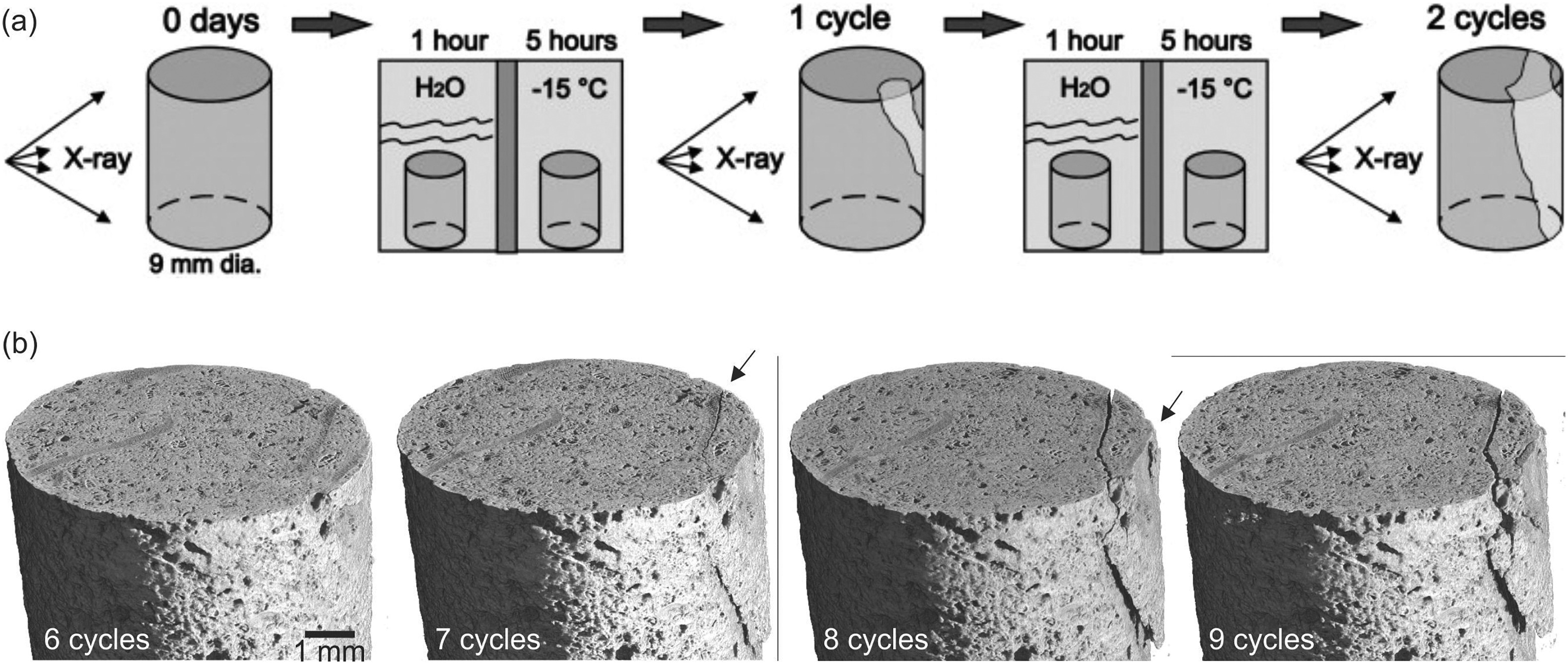Overview
Contact: Veerle Cnudde
- Building stones and the assessment of their physicochemical properties.
- Weathering of natural building stones and their conservation.
Real time 3D monitoring and modeling of frost damage in concrete and sedimentary rocks
- At middle to high latitudes, frost weathering is one of the main causes for the degradation of porous building materials, such as natural building stones and concrete.
- With the EMCT at the UGCT facility, it is feasible to do dynamic scans, which means the sample can be imaged in a temperature controllable cell, and multiple X-ray scans can be taken during cooling.

FIGURE: (a) Methodology to evaluate FT weathering by use of μCT. A 9 mm diameter core sample is first imaged and subsequently subjected to the first FT cycle which consists of 1 h of saturating in water and 5 h of freezing followed by thawing and drying. The sample is then imaged again to visualise and measure the changes in the structure. This can be repeated several times. (b) Results of the workflow described in (a) after 6 to 9 FT cycles performed on a Noyant limestone drilled core. Cracks become visible after 7 cycles and tend to develop along a certain fossil (from Dewanckele et al., 2013).
See also: https://doi.org/10.1016/j.earscirev.2020.103143
The Sustainable Building Lime (SUBLime) project
- The 3D microstructural characterization of the current and new generation lime-based mortars and plasters using high resolution X-ray imaging.
- Calidate the products’ performance towards efflorescence and damage caused by single salts using accelerated efflorescence and carbonation tests on the lime-based mortars.
The SUBLime project has received funding from the European Union’s Horizon 2020 research and innovation programme under Marie Sklodowska-Curie project SUBLime [Grant Agreement n.° 955986].
See also: SUBLIME